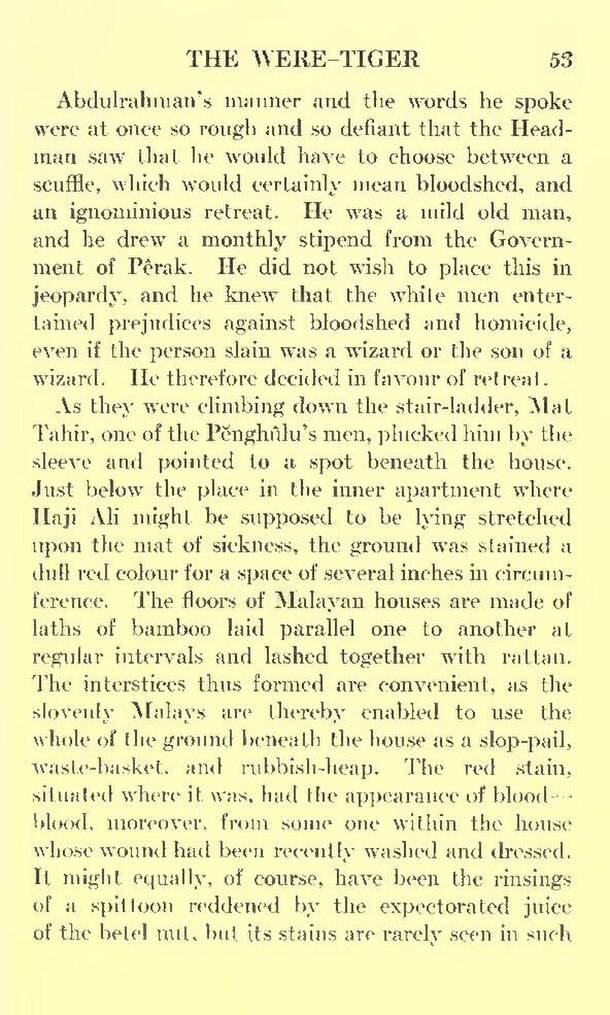Abdulrahman's manner and the words he spoke were at once so rough and so defiant that the Headman saw that he would have to choose between a scuffle, which would certainly mean bloodshed, and an ignominious retreat. He was a mild old man, and he drew a monthly stipend from the Government of Pêrak. He did not wish to place this in jeopardy, and he knew that the while men entertained prejudices against bloodshed and homicide, even if the person slain was a wizard or the son of a wizard. He therefore decided in favour of retreat.
As they were climbing down the stair-ladder, Mat Tahir, one of the Pĕnghûlu's men, plucked him by the sleeve and pointed to a spot beneath the house. Just below the place in the inner apartment where Haji Ali might be supposed to be lying stretched upon the mat of sickness, the ground was stained a dull red colour for a space of several inches in circumference. The floors of Malayan houses are made of laths of bamboo laid parallel one to another al regular intervals and lashed together with rattan. The interstices thus formed are convenient, as the slovenly Malays are thereby enabled to use the whole of the ground beneath the house as a slop-pail, waste-basket. and rubbish-heap. The red stain, situated where it was, had the appearance of blood—blood, moreover, from some one within the house whose wound had been recently washed and dressed. It might equally, of course, have been the rinsings of a spittoon reddened by the expectorated juice of the betel nut, but its stains are rarely seen in such
